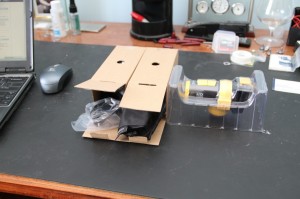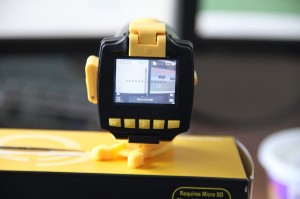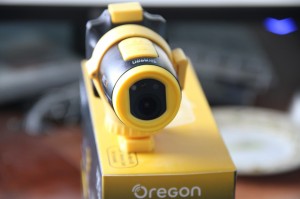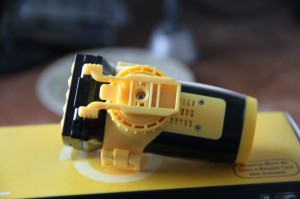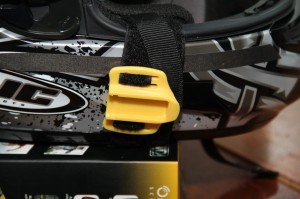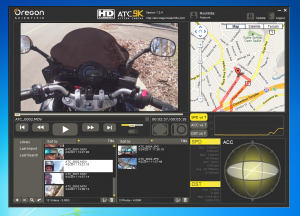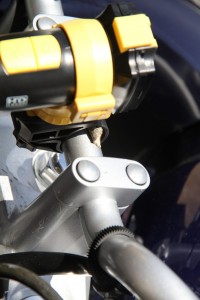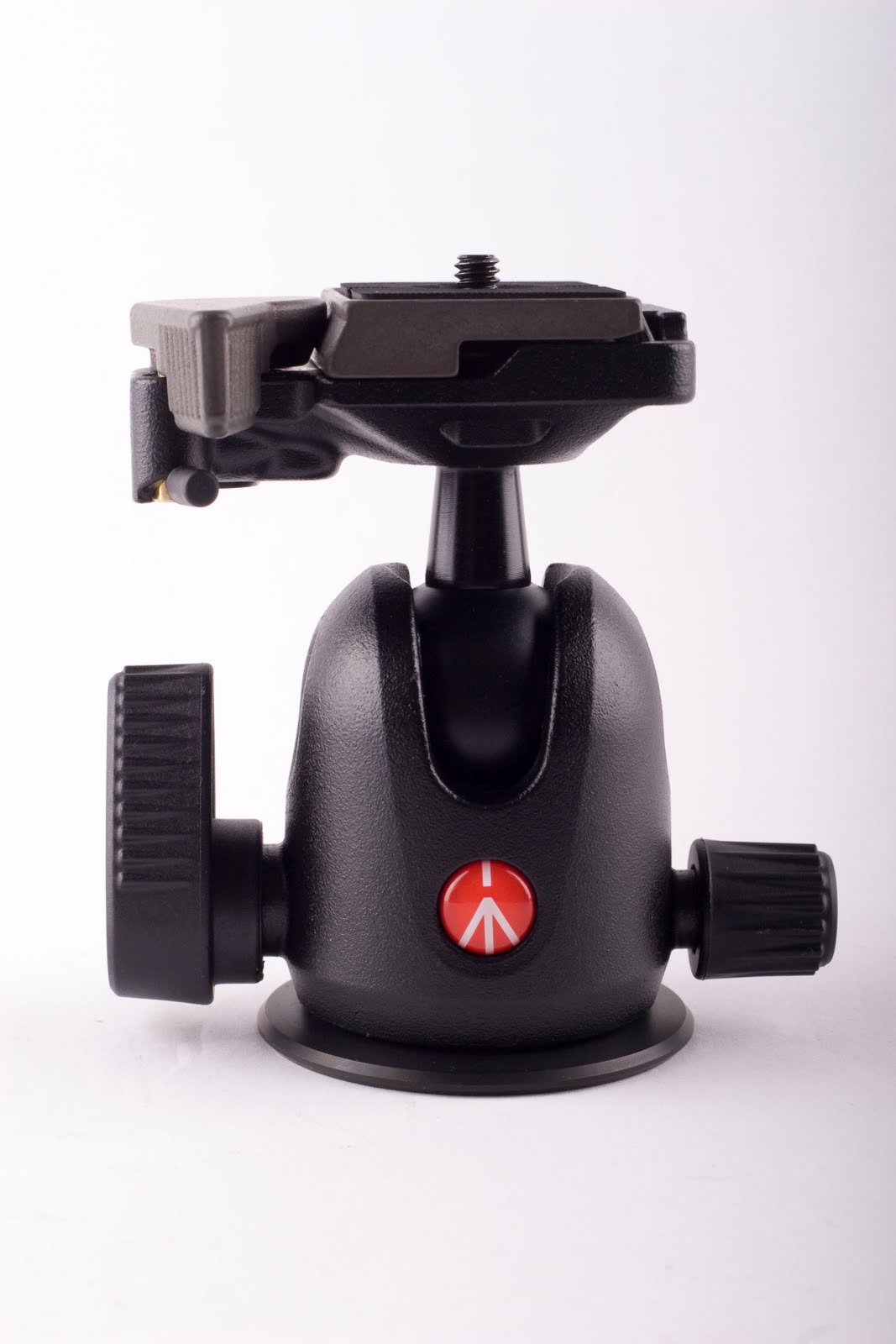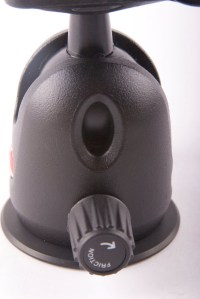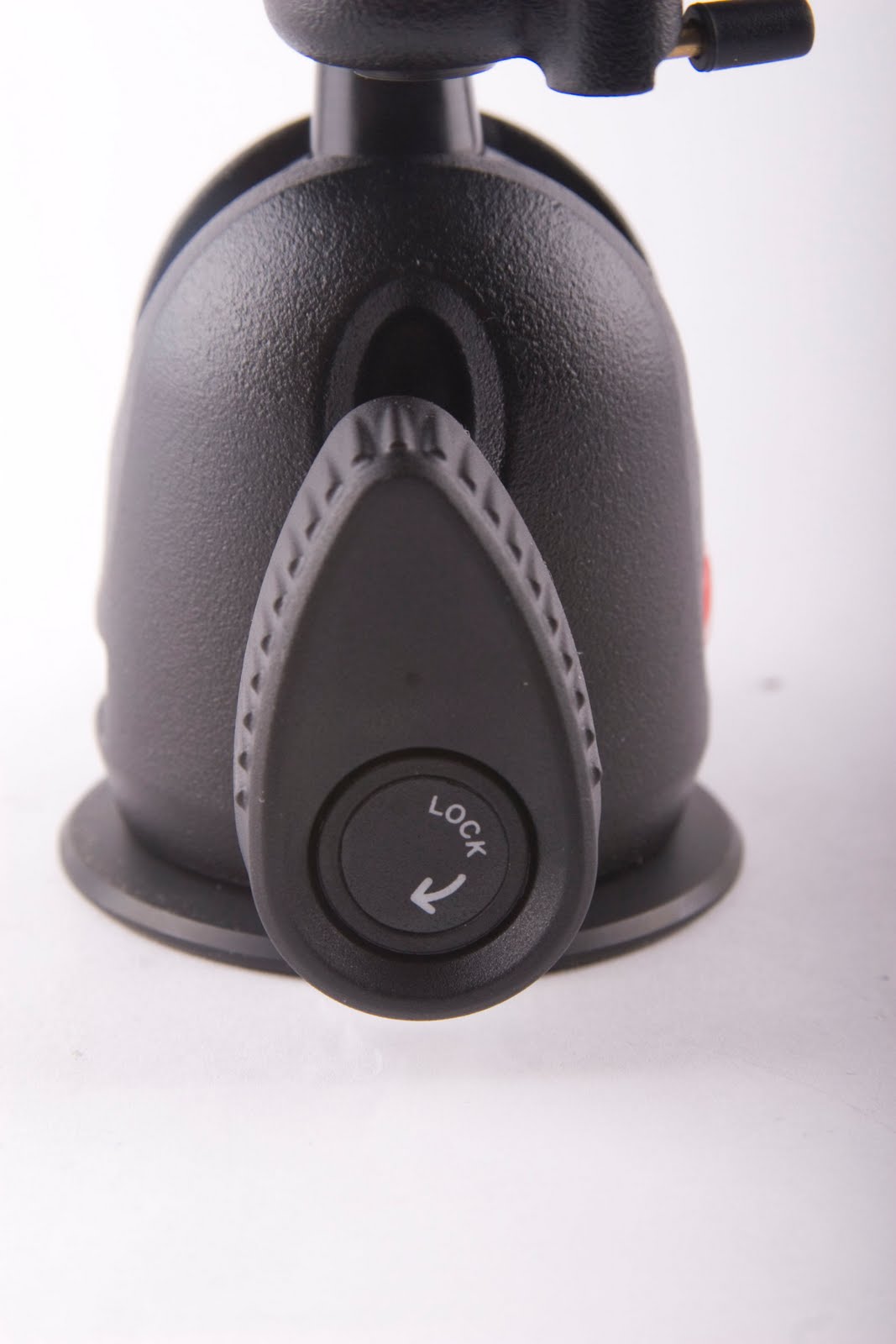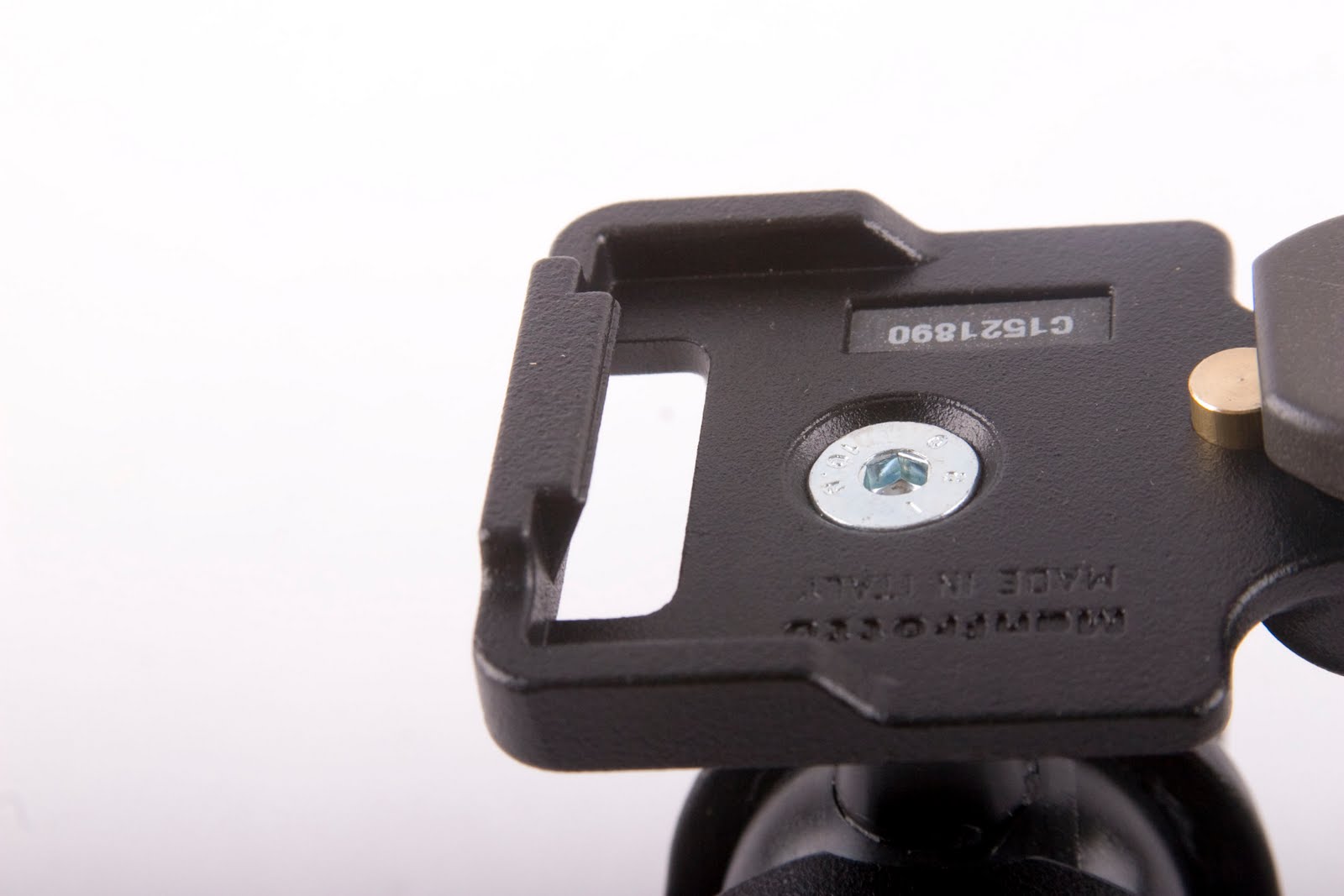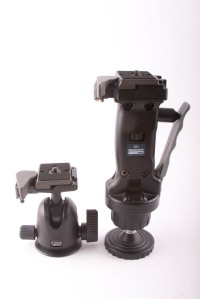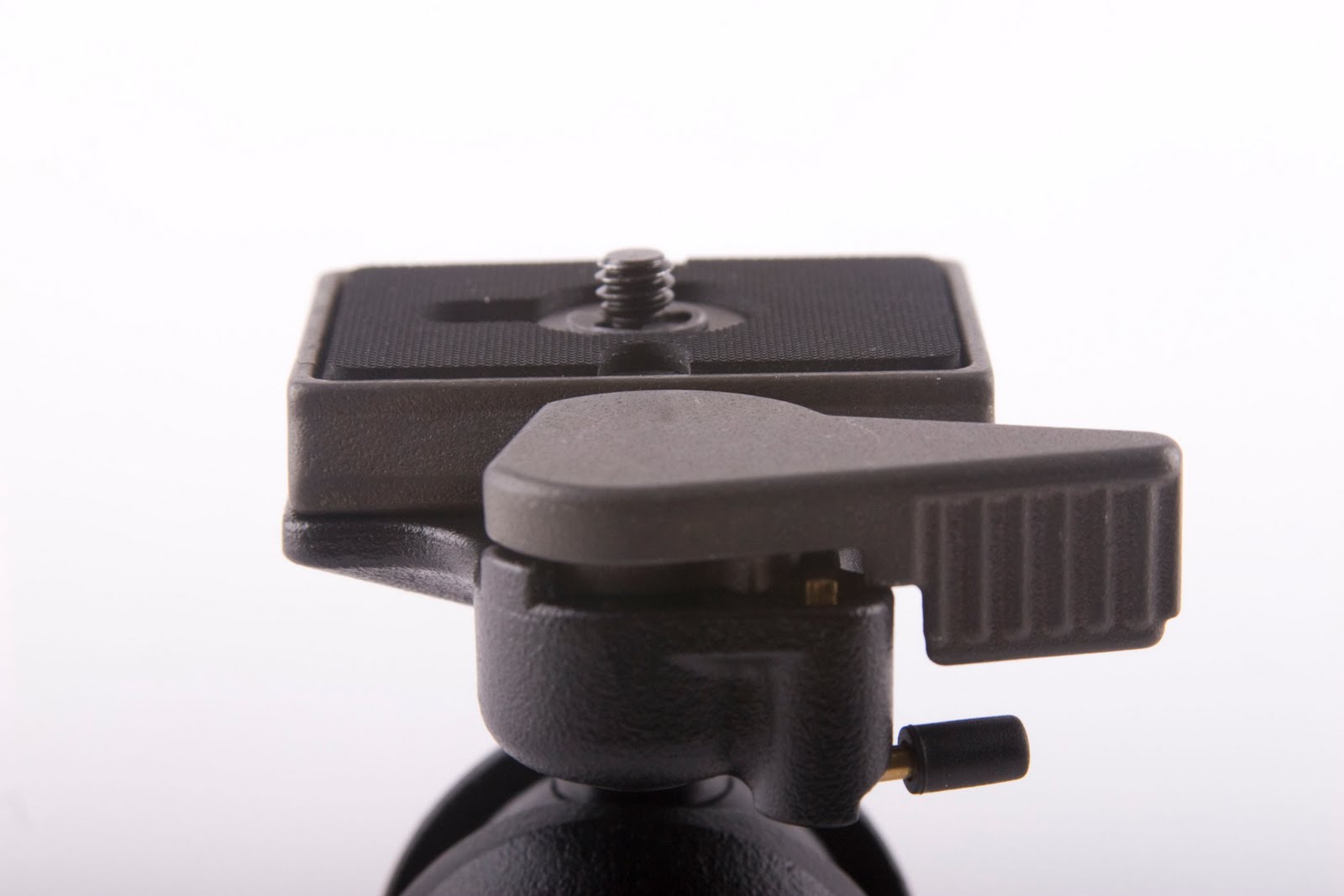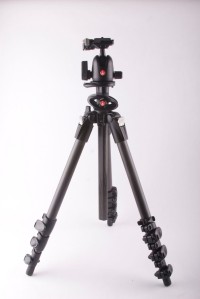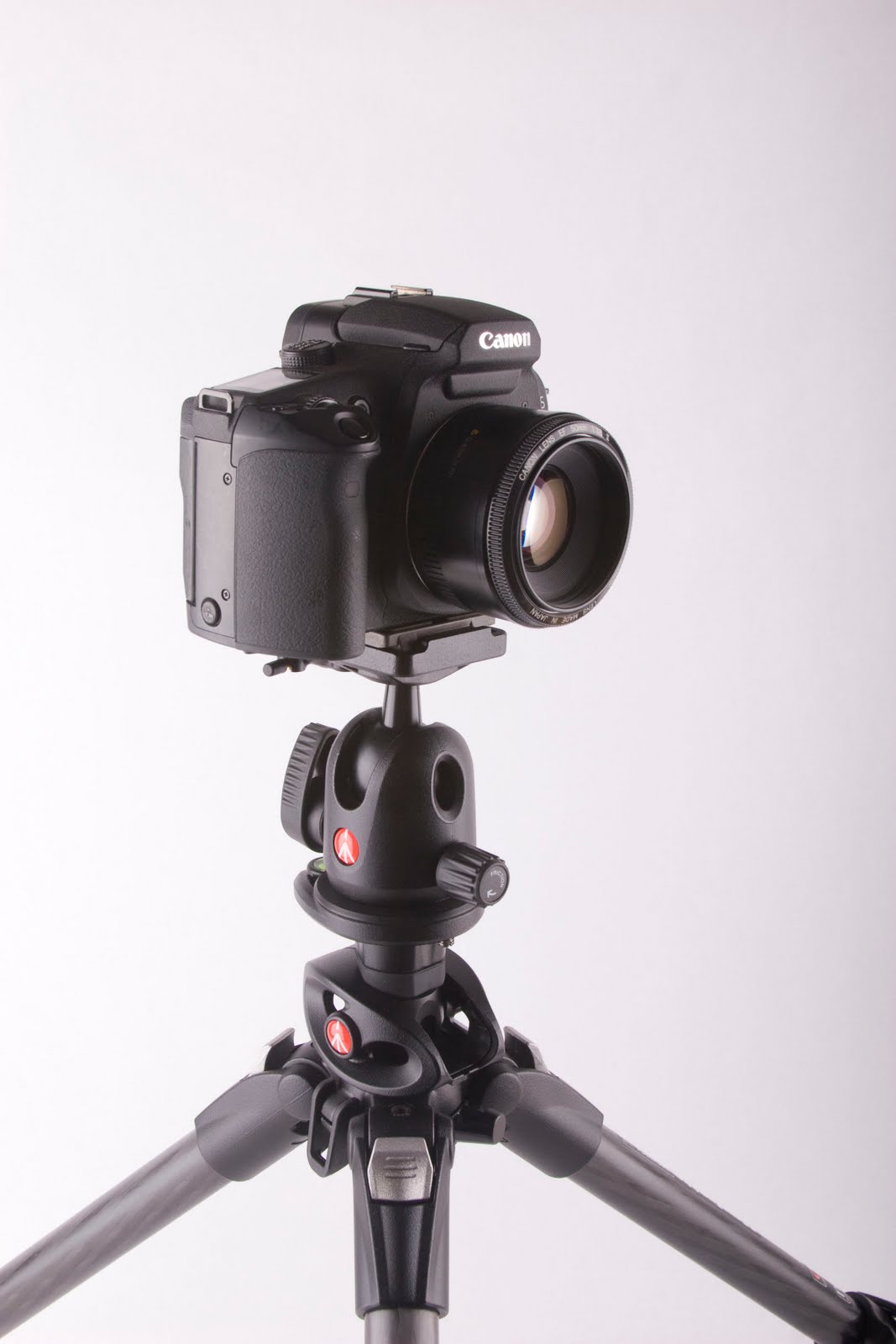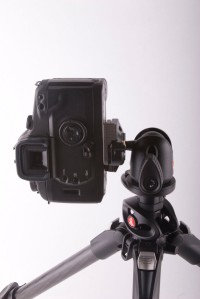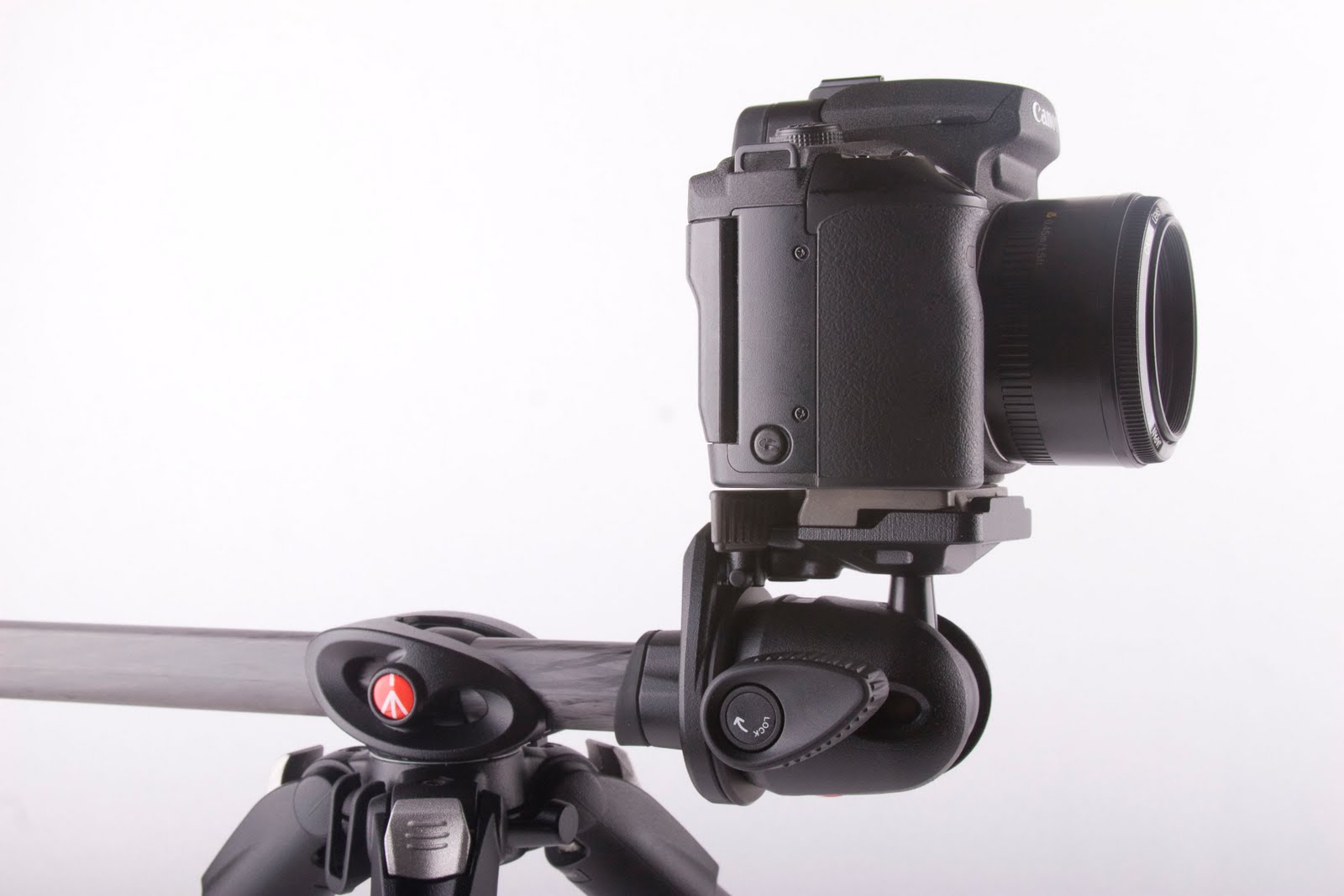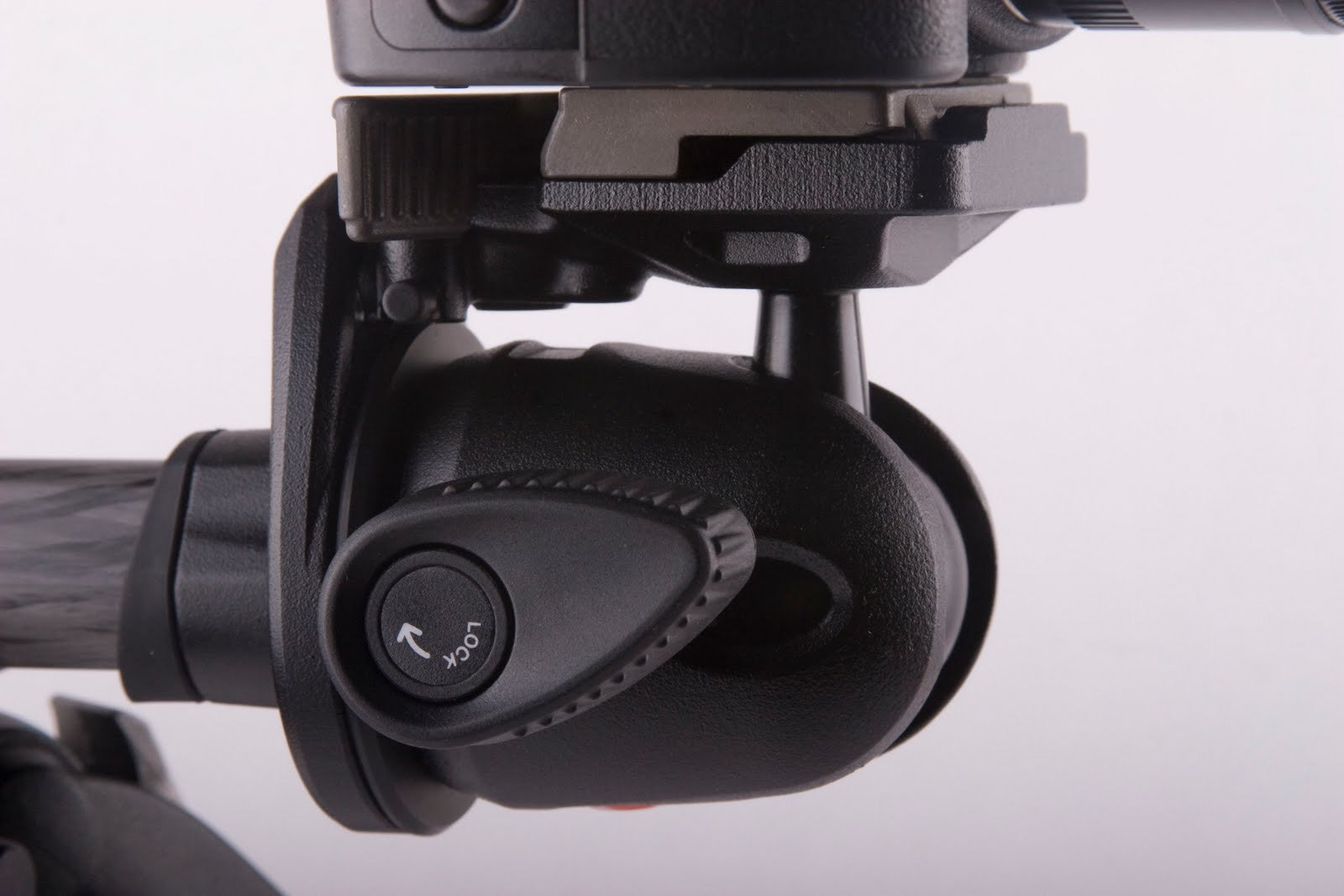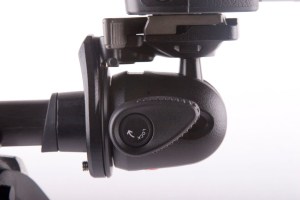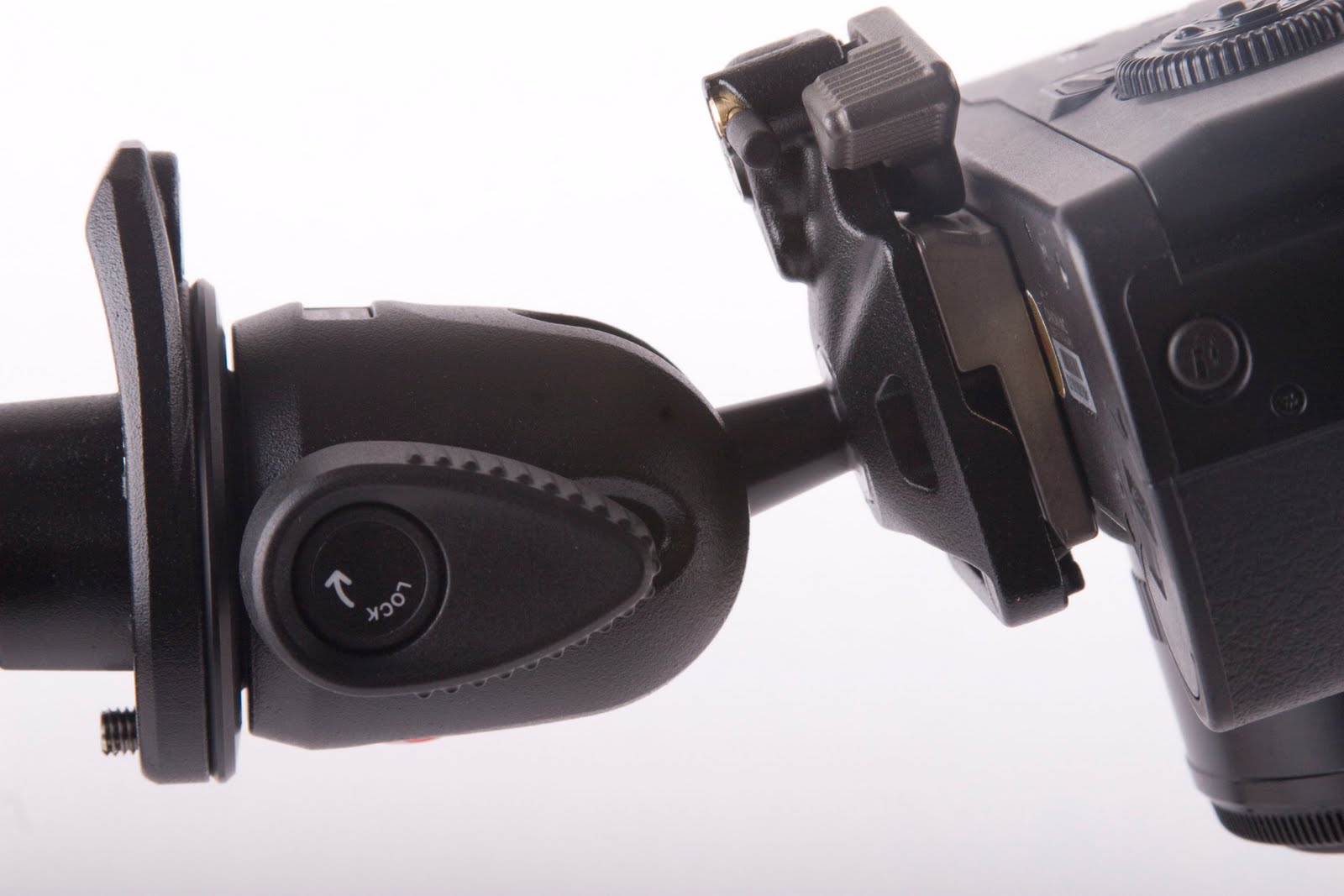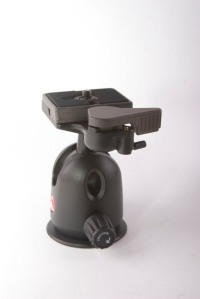Summary:
Good camera, overall, many interesting features, that I hope will become more standard on other “action” cameras: snapshot ability, waterproof w/o any case, remote control, G-force sensor, and optional GPS unit. Not so good mounts (though, at least some of them), especially NOT motorsports-optimized, below average PC software UI. Above average video quality. Good controls. You will need to come up with some mounts yourself, but once you do, the camera performs great.
Intro:
This past summer I played around with GoPro HD camera, and I liked it overall, but did not care for the controls, and having to switch backs back and forth. Controls of the camera are plain horrid! Do you really want me, the popcorn-chewing consumer, to have to memorize what those numbers mean? Anyways, back to store the camera went, and I thought to myself, “the ‘action’ cameras are still somewhat ‘raw'”. Fast forward 6 months, and I’m revisiting the camera question – I’d like to take some videos and pictures while riding, and I don’t want to mount Canon 7D onto the bike. After much research and thinking whether I should bite the bullet and go back to GoPro, I decided to give Oregon Scientific ATC9K camera a try. I got it from REI.com (20% off coupon and some dividends helped 😉 ) with the optional GPS module and after few days of waiting, here it is, in my hands.
Packaging and Contents:
The packaging looks impressive and promises video/photo paradise on earth. I like the black/yellow color scheme – very Monster Yamaha 🙂
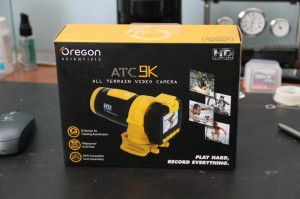 The package includes: camera itself, li-polymer battery, remote control, synthetic camera carry bag, helmet mount, handlebar mount, velcro and silicon straps, usb cable, front and rear protective caps, and hdmi cable. The required microSD Class 4 memory card is not included.
The package includes: camera itself, li-polymer battery, remote control, synthetic camera carry bag, helmet mount, handlebar mount, velcro and silicon straps, usb cable, front and rear protective caps, and hdmi cable. The required microSD Class 4 memory card is not included.
External Features and Controls:
The controls are fairly simple and intuitive (watch and learn, GoPro!) there are two large buttons on top of the cylindrical body – one for taking a snapshot, and another one to start/stop the video recording. You cannot take a snapshot while making the video. The rear of the camera has 1.5 inch LCD screen (refer to the earlier comment, GoPro, no need to pay extra to get a “backpack” to be able to play the video) which I found sufficiently bright to view video on a sunny day. The screen contains all the needed information: shooting mode, exposure compensation, quality, photo quality, white balance, battery status and timer. There is also an optional leveling aid with longitudinal (roll) and lateral (pitch) indicators.
There are 5 control buttons under the screen: Menu, Previous, Play/Pause/Ok, Next, Power. These buttons are just the right size – I can even work them wearing summer motorcycle gloves – and they require some force to be pushed, so accidental activation is not likely.
One of the reasons why I got the camera is the remote control. It’s a nicely sized remote with buttons matching control buttons on the camera, minus the power button. The remote is NOT waterproof – something that I think Oregon Scientific could address – why not keep the “all-terrain” style in all working parts? Meanwhile, I’ll have to improvise: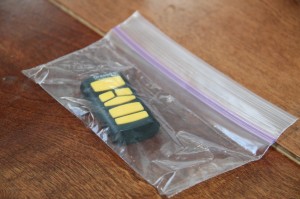
The remote seems to work at distances up to 10 ft., with one IR receiver only in the front of the camera.
Speaking of the front of the camera, here is the frontal view – the lens is set inside the plastic rim, so the camera can be put onto its front without damaging the lens. Right next to the lens, we have an LED indicator, laser pointer and IR receiver. The LED indicator shows charging status and recording status. The laser can be set to work for 5 or 10 seconds before the start of the video to align the shot.
Inside the waterproof door, we have the GPS module, the battery the microSD slot and HDMI and mini USB connectors (just when I hoped I could switch all my sync needs to microUSB, but Canon 7D uses mini as well, so I suppose i shouldn’t complain). The camera is waterproof to 60 ft./20 meters – not as diver-friendly as GoPro in its shell (down to 180 ft/60 meters), but the way I look at it, when you are at those depths, you have other things to worry about, such as pressure and light.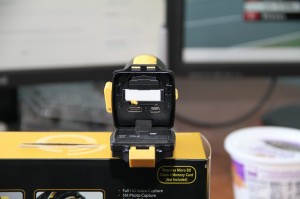
The only remaining external feature of the camera is the microphone which is located on the opposite side from the two main control buttons.
How It Works:
The camera powers up after the power button is pressed for more than 2 seconds and takes just about 2 seconds to power up. Luckily all the music can be disabled. Camera also has Privacy mode, where the camera will not make any sounds and will not indicate the recording status via the LED indicator.There are plenty of adjustments and modes to play with – on par with regular point’n’shoot cameras, which is pleasantly surprising, yet mostly useless, in my opinion.
GPS (optional):
One cool feature of the camera is the GPS module that is optionally available for the ATC9K camera. I am loving it – now I can record where I was without much thinking. The GPS module creates a .MAP file which is later read by Oregon Scientific software and plotted on Google Maps.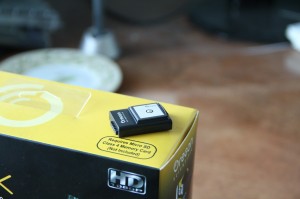
G-Sensor:
Another cool feature is the G-sensor which records the acceleration and velocity into the same .MAP file. The software that comes with the camera will display the information in parallel to the video as well as some statistics and charts, Acceleration plotted against time, for example.
Video:
The camera has 130 degree angle of view. Not as wide as GoPro’s 170 degrees, but good nevertheless.
There are few video modes available:
- FullHD/30 – 1920×1080, 30 fps – approx. 9 minutes of video per 1Gb (source: manual)
- HD/60 – 1280×720, 60 fps – approx. 10 minutes of video per 1Gb
- HD/30 – 1280×720, 30 fps – approx 15 minutes of video per 1 Gb
- WVGA – 848×480, 60 fps – approx 15 minutes of video per 1 Gb
These settings can be permuted with Fine, Good and Normal quality levels.
Adjustments can be made to Exposure, White Balance, Contrast and Sharpness.
Duration can also be set to 15, 30 seconds, 1, 2, 5, 10 minutes to stop the recording.
Pictures:
Picture quality can be adjusted:
Resolution: 3 or 5 Megapixel
Quality: Fine, Good, Normal
Adjustments match those for the video mode, and there is a night mode available, which boosts exposure.
There are some neat features for taking pictures periodically: you can set 3 or 5 continuous shots with interval of 10, 20, 30 seconds and 1, 2, 5, and 10 minutes. There is also a timer for 5 or 3 seconds.
Sound:
The microphone sensitivity can be adjusted between Maximum and Medium. No inputs for external microphones on this camera, but i’m guessing that’s the price of having a waterproof camera. Overall, the sound is good, however there is one problem I have noticed – when mounted on the handlebar of my Yamaha FZ6 using the included handlebar mount, there is an extremely loud high-pitch noise that appears during acceleration above 8-10 mph (warning: loud noise):
Originally, I suspected wind noise (some sort of a turbulence, given the location of the the mount vs location of the microphone, but I noticed an interesting thing – the noise goes away during the deceleration , even if the speeds are significantly higher than 8-10 mph threshold. I decided to see if the sound would be there if I mounted the camera elsewhere:
There is still strong wind noise, but the high-frequency sound is gone. Also, you can see how shaky the mount is.
After mounting the camera on my helmet, and NOT hearing the same noise, I can only conclude that the noise comes from the frame/mount combination. I sent a letter to Oregon Scientific Customer Service to see what they have to say. I am going to have to look into dampened camera mounts, I guess. Additionally, you can see that the narrow view angle does not work well with the handlebar mount.
As far as wind noise, I think it can be fixed with something along these lines: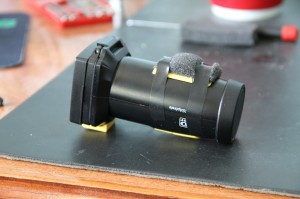
Software:
The software that comes with the camera causes mixed feelings. On one hand it’s an interesting piece combining the video window with Google Maps, and acceleration,speed, distance charts and averages. Really good idea, but poorly implemented from the UI standpoint. The main window cannot be resized, nor can the components be adjusted. What if i don’t want to see my library all the time, but want to see a bigger video instead? I’m out of luck. Also, try to find the button that downloads the content form the camera! It took me few minutes of clicking and listening to “Exclamation” sound (see below). Response is somewhat slow, and highlighting of the buttons (available vs unavailable) is inconsistent. Every time you press a mouse button, Exclamation sound plays. Cute, but becomes annoying after about 1 minute, especially if you are trying to re-play something, or clicking around trying to find the needed function. Not very well thought through interface, Oregon Scientific, AND it doesn’t run on systems other than Windows. Another feature I don’t get is the “login” feature – why should I log in, even though, as far as i can tell the videos and pictures are readily available in the Documents folder.
The biggest flaw:
The mounts. I guess I got spoiled by GoPro “mount to anything” collection of mounting options. This camera is ok for a bicycle, perhaps, but the mounts are VERY flimsy.Here is how I mounted the camera onto the handlebar – this is the mount that caused the high-pitch noise.
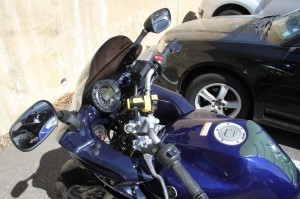
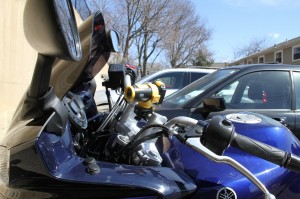 (note the latest nano-technology modification to ensure that camera stays still)
(note the latest nano-technology modification to ensure that camera stays still)
I wouldn’t take this camera/mount combination to a DH worrying the plastic would just snap. I remember mounting GoPro on the swingarm of my bike, for interesting video angle, and I will need to work out some sort of my own mount to do that with ATC9K.
Now, given the issue with the sound, I will have to look into dampened mounts, which will cost extra $$$. And I’m certainly NOT entrusting this piece of electronics to this little piece of plastic to hold my camera on my motorcycle:
Conclusion:
In my dilettante opinion, this is a good camera for recording action, with some very useful features, such as waterproofing, remote control, integrated LCD, G-force recording, optional GPS unit. The video quality may not be the best, but it is at least very good compared to others. The sound is decent. The weak spot of this camera is the mounts that come with it – not enough of them and the ones that are there are not strong enough for hardcore applications. This camera would be great helmet camera for motorsports, DH biking, sky-diving, but the mounts are not up to par. Software gets another negative comment – it is something that looks like a good idea, but has confusing and not intuitive interface. Overall, I am keeping this camera, but will have to invest money and time into making my own mounts.
UPD1: Follow-Up #1
UPD2: Follow-Up #2
